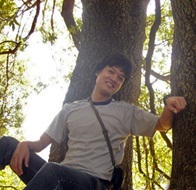 |
Shee Zhi Qiang
Currently on Secondment to MND as Deputy Director/ Infrastructure
Bachelor of Science in Forestry & Natural Resource (Hons Class I), University of California, Berkeley, 2010
|
The alarm tells me that it is 7.30 in the morning. I crawl out of bed and look out the window at the horizon, where the sun gradually illuminates the Golden Gate Bridge. It is a spectacle of unparalleled beauty that I fear I may have started taking for granted. There is just enough time for me to get changed, grab breakfast from the fruit basket and head out to the first lesson of the day.
Walking past the oak grove on my way to class, I catch the aroma of freshly-brewed coffee. It is a chilly 4 degrees Celsius this morning, but the tree-sitters are already up having their first cup. They have been sitting in the trees for a month and a half now, protesting the university’s decision to cut them down and build an athletic facility on the plot. The movement has so far been successful, winning a court injunction that prohibits the removal of the trees until another environmental impact assessment is made. What inspires me, however, is not that the movement, which has often been caricatured by the press as just another hippie love-fest, has managed to gain legitimacy in the court of law. It is, instead, the passion with which the residents and students have involved themselves that has struck a chord with me. Why was I not surprised when my professors started speaking in public about the ecological and historical significance of this tiny oak grove?
After the morning’s biology lecture, I meet up with friends from the hiking club. We had hiked up Mount Diablo the previous weekend, during tarantula mating season. The ground had been littered with the carcasses of dead but satisfied males, while the females sunbathed on the rocks right next to their deceased lovers’ severed limbs. We discuss the details of our next trip – we will be riding up to Grizzly Peak to survey our field research site, where we intend to investigate the allelopathic effects of the non-native eucalyptus trees on local flora.
The tolling of the Campanile tells me that it is time for lunch. As I head out of the campus, my gaze is drawn up to the looming clock tower and think of the dedicated students who spend their lunchtimes playing noontime concerts on the carillon bells. Often, the tune will be an obscure Baroque piece. Today, it is “Yankee Doodle”.
The Asian ghetto on Telegraph Avenue is where I get my daily fix of home, in a city where most other choices for lunch are between dirt-cheap, one-topping pizza and exorbitant organic, fair-trade sandwiches. At the other end of Telegraph is the city of Oakland, which until recently held the ignominious record for the highest homicide rate in the United States. The title has since passed on to Richmond, just a few blocks away on the opposite side of the university. Telegraph is no safe haven either. It was the site of massive protests in 1969, which resulted in the death of one protestor and the injuring of many others at the hands of the police. Ronald Reagan, then governor of California, called a state of emergency and sent in troops from the National Guard to control the situation. Telegraph today is an eclectic mix of used book and record stores, discount shops and roadside stalls. Many a freshman has reeled at the sight of homeless people sleeping in street corners and shop entrances – and gagged at the faint whiff of urine that always seems to linger in the air.
By mid-afternoon, the sun has warmed the air enough and I decide to go on a run. The trail takes me through the hills and ends up right behind Lawrence labs. It was here almost 70 years ago that Ernest O. Lawrence separated the two isotopes of Uranium for use in the atom bomb. It was in the very same place that Glenn T. Seaborg discovered the elements Californium and Berkelium. On the way back to the dorms, I pass by the Memorial Stadium, which sits right on top of the Hayward fault. The bracketed columns betray signs of stress, where the Pacific plate inches past the North American plate. It is long overdue for a major earthquake, the last one having taken place as recently as 1889. In California, earthquakes are a fact of life.
Checking my email late at night, I receive an invitation from my Graduate Student Instructor to assist her in a field project in San Diego over the spring break. She had brought the class on a field trip to the Mojave desert once before, where it rains on only 4 days a year. We had the good fortune to run into a hailstorm. I reply to the email, shut the computer and dive under the covers, dreaming of what opportunities the new day will bring. I almost dread having to graduate in 2010.
It is just another day in the life of a forestry student at the University of California, Berkeley.